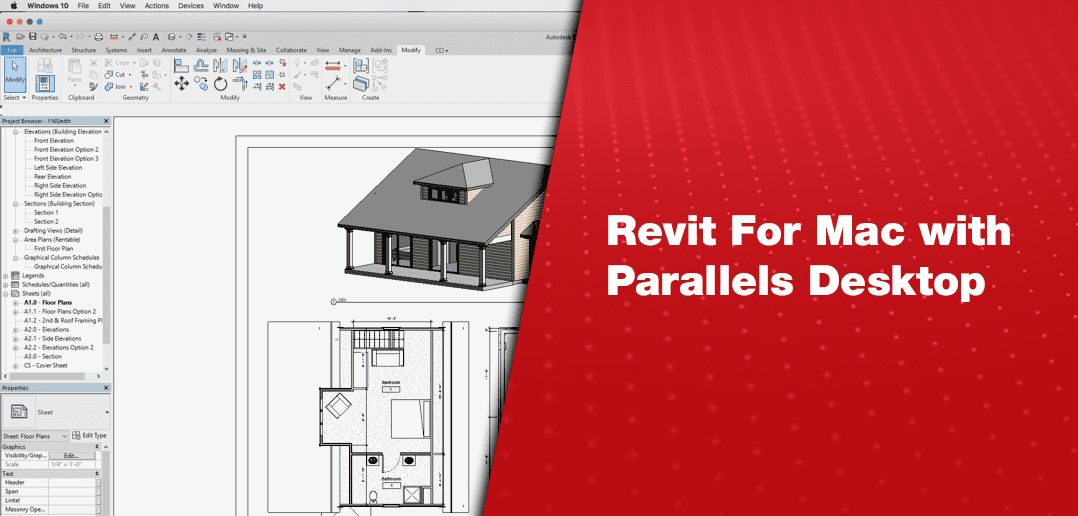Parallels Desktop provides support for a plethora of operating systems, such as Windows (going from Windows 3.11 to Windows 8), MS-DOS, RED Hat Enterprise, Fedora, CentOS, Ubuntu, Debian, Suse Linux Enterprise, Mandriva, Solaris, Chrome OS, Mac OS X Leopard and Snow Leopard Server or Android.
Parallels Desktop 11 for Mac is virtualization software that enables users to use OS X El Capitan and Windows 10 side by side without rebooting, including full support for Windows and Mac apps. The software includes a setup assistant for switching from PC to Mac, one-click optimization settings, Linux and Google Chrome support, advanced security features and more.The latest version of Parallels Desktop also features Quick Look for Windows documents, Travel Mode for temporarily shutting down resource-intensive services to extend battery life, location services in Windows apps and easy upgrading from Windows 7 or Windows 8.1. Performance improvements include up to 50% faster boot and shut down times, up to 15% longer battery life and up to 20% faster tasks.
- Aug 18, 2015 In this video by Parallels, the new features of Parallels Desktop 11 for Mac are highlighted. Video used with permission of Parallels.
- Parallels allows you to run Windows and Mac applications side by side. Choose your view to make Windows invisible while still using its applications, or keep the familiar Windows background and controls on your Mac.
Parallels Desktop 11 for Mac is $79.99 with a free 14-day trial available, while customers with Parallels Desktop 9 or newer can upgrade for $49.99. Parallels Desktop 11 for Mac Business Edition and Pro Edition both retail for $99.99 per year with faster 64GB virtual RAM / 16 vCPUs for each virtual machine and extended premium 24/7 phone and email support.
- 9.0Outstanding
Pros
- ✓Runs Windows and Linux VMs on Macs
- ✓Tight integration of Windows and Mac features
- ✓Improved performance and battery life
- ✓Supports Windows 10 and OS X El Capitan

Cons
- ✕Requires plenty of memory and processor power
- ✕Poor documentation for newcomers
Updates to the popular Parallels Desktop virtualisation program generally coincide with new versions of the Mac operating system, so it's no surprise to see that Parallels Desktop 11 arrives just a few weeks ahead of Apple's new OS X v10.11 -- a.k.a. El Capitan. But, of course, this year's update also follows the recent arrival of Windows 10, which means that Parallels Desktop 11 is a fairly major update that provides support for both of these new operating systems.
Hey Cortana, where's Siri?

The most impressive aspect of Parallels Desktop 11 is not simply that it allows you to run Windows as a virtual machine (VM) on the Mac (along with various versions of Unix, and even Android and ChromeOS too), but that it continues to integrate the Mac and Windows environments so that features from each operating system become almost interchangeable.
One of the headline features in Windows 10 is Cortana, the 'personal assistant' that lets you use voice commands to find information on the web, send messages and perform a variety of other tasks. Cortana is often compared to Apple's Siri, but Siri is currently only available on Apple's iOS devices and doesn't run on the Mac. Parallels Desktop 11 therefore pulls off quite a trick by allowing Cortana to not only run within a Windows 10 virtual machine, but also to run with the VM hidden or running in the background while you work in native Mac apps. So, while I'm typing this review in Apple's Pages wordprocessor, I can say 'Hey Cortana - schedule a meeting'. The Cortana window then pops up from the Dock on the Mac desktop and lists options for my meeting.

OS integration
Installing Parallels 11 For Mac
Other examples of this OS integration include the Mac's QuickLook option, which now works within Windows too, allowing you to preview documents stored on a Windows virtual machine just by hitting the space bar on your keyboard.